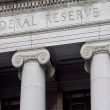by Hubert Marleau, Market Economist, Palos Management
February 3, 2023
February came right off the bat with the Fed's decision to raise the policy rate by 25bps to 4.625%, the midpoint between 4.50% and 4.75%. It was unanimously expected, but it sparked pressing concerns that the January rally could be over and done with. Many pundits believe that investors are playing a game of chicken with the Fed. Chairman Powell continued to insist that he is serious about holding inflation in check, reiterating that neither he nor his colleagues have any intention of lowering, let alone pausing, interest rates anytime soon, even if it means overall trouble for the economy and markets. By and large, the monetary authorithies seem reluctant to abandon aspirations of a 5% terminal rate. The question is, will it happen? Perhaps they’re bluffing. Powell admitted that the disinflationary process had started and that progress was encouraging.
At first glance, the market did not take the committee’s comments well, showing indecisiveness. It shouldn't have because peak inflation is behind us and the pace of economic growth has softened. I don't buy the Fed’s official line, and it looks as though the majority of traders and speculators are not buying it either. During the press conference, Powell was nonchalant, even at ease with the mismatch of expectations between the Fed and the market. The tone was conciliatory, however, signalling that it was just an inoffensive difference of opinion.
Meanwhile, hope for a resolution over the debt ceiling improved. It was reported that the meeting between President Joe Biden and House leader Kevin McCarthy was good, frank and straightforward. They still remained at odds on how to avoid a default, but manifested willingness to talk some more.
Disappointing big tech earnings from Google, Apple and Amazon and surprisingly strong jobs growth called time on the rally. Nevertheless, the S&P 500 managed to close at 4136 on Friday for a weekly gain of 1.6%. Again, I'm sticking to my earlier guesstimate for now that the benchmark will touch 4250 this spring and likely pause thereafter rather than registering a big move in either direction. There are offsetting forces at play.
However, I was really tempted to raise my outlook to 4450 because the S&P 500 closed above 4120 on Friday, confirming that the market did produce a technically bullish “golden cross” last week. Stifel’s Barry Bannister, Oppenheimer’s Ari Ward and Yardeni Research’s Ed Yardeni are calling for higher prices, ranging from 4300 to 4600. The anticipated contraction in profit margin stemming from lower inflation will likely be counterbalanced by higher P/E multiples supported by lower bond yields and by higher corporate revenues propped by the beneficial mechanical effect of a lower dollar, which is 10% off major trading currencies. Downward pressure on the greenback is bound to continue because the monetary policy is diverging in favour of the Pound, the Euro and the Yen.
In the meantime, the interest rate cycle is nearly over, and the federal funds rate is already at a restrictive level. With the yield curve inverted across the board, plus the policy rate is both above the neutral rate and inflation expectations, all this is occurring while QT is going on at a fast pace. Bank reserves in the last 9 months have fallen by $0.9 trillion to $3.0 trillion, standing at 13.3% of N-GDP. These could fall even faster over the coming months because banks are losing deposits to money market funds. In fact, the Bank of Nova Scotia thinks that the aforementioned ratio could fall 11% by June, given the present pace of drawdown. The big money market banks may soon run short on reserves.
The Timetable As I See It
The Fed will retreat from hawkish rhetoric in March when the next two rounds of growth and inflation data will give further assurance that the path of inflation and growth is down. Despite statements by the monetary authorities that they won’t cut interest rates in 2023, investors should look past current headwinds and try to figure out where the puck will be in 6 months from now. The economy is not about to return to a monetary utopia, but the time-line to an even keel monetary policy is foreseeable.There will be another small rate increase in March, only because the policymakers are wedded to the idea of posturing in front of the market. But it will announce a pause in May, to be followed by a pivot sometime in Q4 that will be accompanied by a formal declaration that the mission is accomplished, steering monetary policy toward a balanced approach.
On the inflation front, the slowdown in wage growth is both real and sharp. The headline Employment Cost index (ECI) rose 1.0% in Q4, which was below consensus and slower than the 1.3% and 1.4 % registered in Q3 and Q2 respectively. It was the smallest increase since the 4th quarter of 2021. Ex-incentive pay private sector wage growth rose only 0.9% cataloguing an annualised rate of only 3.7%, which means that the relationship between employment and wages - a notion known as the Phillips Curve - is normalising and returning to its pre-Covid position. Put simply, it suggests that wage growth is back to a pace consistent with the Fed’s 2% inflation target, unless you are willing to take a dimmer view on productivity than me. Two weeks ago, I argued that productivity may have increased at an annual rate of 2.4% in Q4. Well, it did better: officially it rose 3.0%. The Fed should be happy with this because it is getting what it wants. Unit labour costs increased 1.1% Q/Q versus the consensus expectation of 1.5%,and the BLS’ report on the job market confirmed that wage rates were subsidising as the ECI showed and also average hourly earnings, which rose 0.3% m/m in January. The Institute for Supply Management (ISM) reported that prices paid by manufacturers for supplies recovered in January to 44.5 from 39.4 in December, yet the fact remains that prices were still falling. Meanwhile prices paid by the service sectors continued to rise, but at a decelerating rate.
On the growth front, the economy has started to stutter. The ISM ’s gauge of factory activity fell in January to 47.4, the weakest reading since the immediate aftermath of the original pandemic lockdowns. Retail sales have fallen in 3 of the last 4 month across several key sectors like housing, autos, goods and services. Consumers are not as flush with cash as they once were and they are less inclined to buy on credit because credit-card interest rates have risen. In fact, the share of monthly income set aside for savings rose to 3.4% in December, indicating perhaps that the savings rate will climb back to the 7.5% pre-pandemic level: a very good long-term development in terms of investments and interest rates but a short-term drag on economic growth because consumer spending accounts for about 70% of the economy.
However, the ISM’s gauge for business activity in the service sectors has offset all of the slack found elsewhere. The index rose solidly to 55.2 in January versus an estimate of 50.2. It explains why the near-record ratio of job openings, which climbed past 11 million in December, to unemployment, rose to a near record high 1.9x, keeping alive the” immaculate disinflation” and the “soft landing” narrative. Initial job claims came in at only 183,000 last week, the lowest since May. The labour market is holding up commendably for two reasons. Many of the lost jobs in the technology sectors are ending up with small businesses, start-ups and services in need of digital workers. Moreover, many firms are asking workers to reduce their hours worked, rather than sacking them. The January Non-Farm Payroll (NFP) rose sharply, showing that the economy added 517,0000 jobs in January - a whopping amount and far more than expected. Concurrently, the unemployment rate fell to 3.4%, the lowest since 1969.
The NowCasting model of the Atlanta Fed is predicting an annual rate of increase in R-GDP of 0.7% in Q1 and it does not include the incredible January increase in new jobs.
Grey Swans in Our Midst
Rona Forrohar, a columnist at the FT, wrote a thoughtful and insightful letter in May 2021, in which she argued that there were many known risks, unlike unpredictable ones called “black swans,” hidden in plain sight that we can see coming in advance. Deborah Pretty of Pentland Analytics dubbed them “grey swans,”. Their timing is unpredictable but the events are not. I’ve come to the realisation that climate change, supply-chain disruption, inflation, demographic shifts, financial instability, inequality and populism were predictable before they actually happened. Add in digital connectivity and one has what complexity theorists would refer to as an infinite problem rather than a series of finite issues.
I understand that the science of superforecasting big changes is weak because timing is a major issue. That is why experts are terrible at it. Yet, these types of risks can have serious investment implications over the long term time. Investors must deal with these to minimise their effects on the performance and volatility of their investment returns. Given that such risks usually take a rather long time to express themselves fully, they require step changes in thinking about managing serious underlying problems. If one waits too long until all the data shows, it's going to be too late because deep changes in the way to invest will become necessary without warning. Thus, the exercise needs to be based on insightful judgement, intense reading and listening wisely to the wisdom of the crowd in the hope that one will be able to prioritise probabilities over gut feelings.
The Population is Falling and Aging: Africa Excepted
The decline of demographics deserves as much attention as climate change. The birth dearth and the ageing of the population is not only reducing the labour pool but increasing the dependency ratio of the young and the old on a shrinking share of the working-age population. This on-going demographic shift will strain the welfare system, government finances and economic resources while changing the equation between savings and investments. The saving grace can only be productivity and/or immigration.
Sir Wilfred Laurier would be happy to hear that Canada is bucking the world-wide trend toward lower work-force levels and an ageing population. In 2022, as a result of liberal immigration policies, student visas, work permits and acceptance of refugees, permanent and non-permanent residents arriving in Canada totaled almost 1,000,000. That’s roughly 2.5% of Canada’s population. These trends are not likely to ease, in spite of our terrible weather, because eligibility rules are being waived, hundreds of thousands of potential entrants are waiting to be processed and new applications are soaring. In this connection, I prefer real estate, retail, utility, telecommunication and infrastructure plays in Canada to those in the US. These sectors, the future of which, depend greatly on population growth.
Copyright © Palos Management















